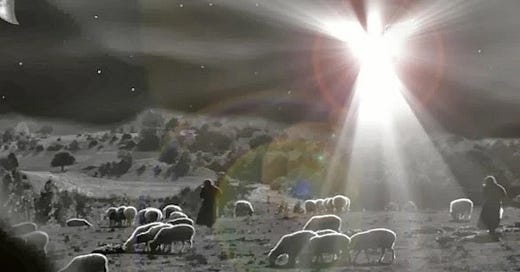The astrologers come from the East to Jerusalem, led by the ‘star’. They depart from Herod:
There in front of them was the star they had seen rising. It went forward and halted over the place where the child was (Matthew 2).
What is the star?
A cosmic event? The conjunction of Mars, Jupiter and Saturn on February 20, 6 BC? The 2007 proposal of Grant Matthews, Astrophysicist at Notre Dame University, is possible.
A symbol perhaps?
That this star was not of the common sort, or rather not a star at all, but some invisible power transformed into this appearance, is in the first place evident from its very course. For there is not any star that moves by this way (St. John Chrysostom).
The ‘star’ is certainly affective:
At the sight of the star, they rejoiced exceedingly with great joy (Matthew 2).
Matthew is deliberately redundant in his use of language:
Matthew’s redundance here is intentional. The expression anticipates the ‘great joy’ of the women on Easter morning (Montague, Companion God, 30).
Pope Emeritus Benedict XVI expressed it well:
The great joy of one who has found what she sought, and has herself been found.
Amen.


